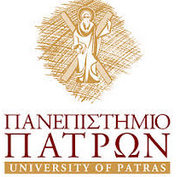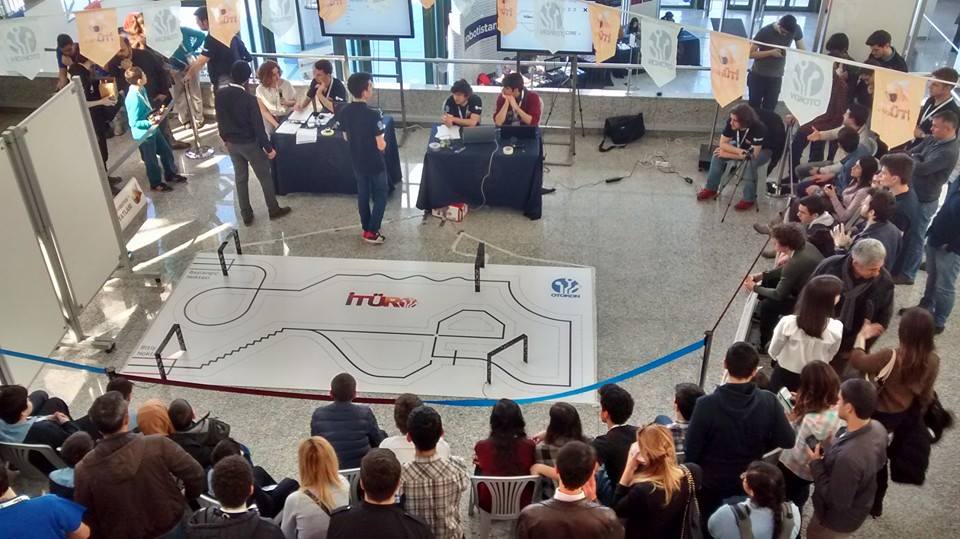 The technologies of robotics and 3D printing continue to converge. While in essence, a 3D printer is a robot itself, it’s the robots that are able to be fabricated via 3D printing which are becoming the real story. We have covered numerous stories of both professional and amateur robotic creations that have utilized 3D printing to a large extent. The number of applications within the robotics space for 3D printing will only continue to expand as both technologies advance.
The technologies of robotics and 3D printing continue to converge. While in essence, a 3D printer is a robot itself, it’s the robots that are able to be fabricated via 3D printing which are becoming the real story. We have covered numerous stories of both professional and amateur robotic creations that have utilized 3D printing to a large extent. The number of applications within the robotics space for 3D printing will only continue to expand as both technologies advance.
Recently we stumbled upon quite an interesting group of students and faculty from the University of Patras, in Greece, who make up the university’s Robotics Club. This club, which is coordinated by Mechanical Engineer and PhD Candidate Fotis Dimeas, has been using 3D printing in order to fabricate a number of high-speed, line following robots for competitions they have been participating in.
“The purpose of the club is to promote robotics to our university,” Dimeas explained to 3DPrint.com. “We try to give the students the opportunity for hands-on experience by building our own robots. Our club was an initiative of a few Phd students of the Robotics Group, a research team in the department of Mechanical Engineering & Aeronautics, driven by professor Nikos Aspragathos. Robotics Club has been operating since 2002 and each year we invite undergraduate students to participate in a number of projects. All students study engineering among the departments of Mechanical, Electrical & Computer Engineering.”
Last year the team created Dromeas I, a line following robot which was almost entirely 3D printed, besides of course its key electronic components. This year as the team planned to compete in the ITU Robot Olympics 2015 (April 9-11), they stepped things up a couple of notches. They have 3D printed two entirely new robots, Dromeas II and Dromeas III, which are incredibly fast, able to reach speeds of 5 meters per second (over 11 mph), and function quite reliably.
Line following robots are typically used in competitions as a way to test the functionality and dynamics of a robotic system. They are usually put up to a series of tasks, which include following solid lines, curved lines, dashed lines, avoiding obstacles, dealing with inclines and declines, and more. Contests usually reward those robots that can complete a course the quickest, without getting stuck.
“‘Dromeas’ is a Greek word, meaning a running athlete,” Dimeas stated. “We wanted to build a competitive robot using latest technologies in 3D Printing, micro-controllers, software and sensors. We started from scratch by designing a new robot in Solidworks. The design process involved part selection, mechanical stress analysis, mobile robot kinematics with dynamics and even a computed fluid dynamics analysis for the aerodynamics. Having a complete 3D model, it was easy to build the chassis with our Ultimaker 3D Printer. 3D CAD and 3D printing were really valuable assets during the building process, since we could materialize our ideas within a few hours.”
 These robots function via an array of light reflectant sensors in their ‘heads’. These sensors detect the robot’s position relative to the line it is supposedly following. If the robot gets off-course, a PID controller then is utilized to send voltage to a pair of DC motors that move the robot, re-defining its path. Additional components such as an accelerometer and gyroscope are used to deal with obstacles and varying inclines and declines to the course. The brain of the robot is a 32-bit micro-controller (Arduino Due or Teensy) and all of the electronic components are connected to a custom built PCB that the Robotics Team fabricated in their lab.
These robots function via an array of light reflectant sensors in their ‘heads’. These sensors detect the robot’s position relative to the line it is supposedly following. If the robot gets off-course, a PID controller then is utilized to send voltage to a pair of DC motors that move the robot, re-defining its path. Additional components such as an accelerometer and gyroscope are used to deal with obstacles and varying inclines and declines to the course. The brain of the robot is a 32-bit micro-controller (Arduino Due or Teensy) and all of the electronic components are connected to a custom built PCB that the Robotics Team fabricated in their lab.
As for how the University of Patras’ Robotics Club fared at the ITU Robot Olympics 2015, they did quite well for the number of competitors that they had to face. Although their line following robots did not win any top prizes, out of a total of 118 competitors (232 robots at the competition), the Dromeas II and Dromeas III came in 24th and 28th.
“We are very happy with the results, considering that this was just our 2nd time at a competition,” stated Dimeas. “We obtained valuable experience that will help us in the future to make even more competitive robots.”
Have you ever participated in a line following robotics competition? How did you fare? Discuss these robots in the 3D Printed Line Following Robot forum thread on 3DPB.com.
Subscribe to Our Email Newsletter
Stay up-to-date on all the latest news from the 3D printing industry and receive information and offers from third party vendors.
Print Services
Upload your 3D Models and get them printed quickly and efficiently.
You May Also Like
Making Space: Stratasys Global Director of Aerospace & Defense Conrad Smith Discusses the Space Supply Chain Council
Of all the many verticals that have been significant additive manufacturing (AM) adopters, few have been more deeply influenced by the incorporation of AM into their workflows than the space...
EOS in India: AM’s Rising Star
EOS is doubling down on India. With a growing base of aerospace startups, new government policies, and a massive engineering workforce, India is quickly becoming one of the most important...
PostProcess CEO on Why the “Dirty Little Secret” of 3D Printing Can’t Be Ignored Anymore
If you’ve ever peeked behind the scenes of a 3D printing lab, you might have caught a glimpse of the post-processing room; maybe it’s messy, maybe hidden behind a mysterious...
Stratasys & Automation Intelligence Open North American Tooling Center in Flint
Stratasys has opened the North American Stratasys Tooling Center (NASTC) in Flint, Michigan, together with automation integrator and software firm Automation Intelligence. Stratasys wants the new center to help reduce...





































